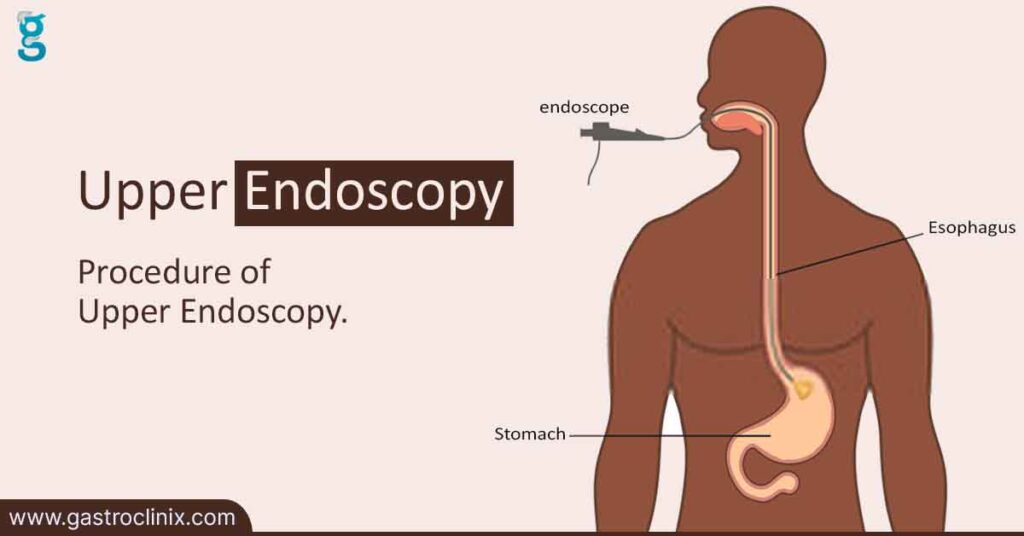Upper endoscopy is a procedure that lets a Gastroenterologist examine the lining of the upper digestive tract. The upper digestive tract includes the esophagus (the tube that connects the mouth to the stomach), the stomach, and therefore the duodenum (the first part of the small intestine).
You might have an upper endoscopy if you have:
• Pain in your upper belly that you just cannot explain
• A condition called “acid reflux”
• Nausea and vomiting that has lasted a long time
• Diarrhoea that has lasted a long time
• Black bowel movements or blood in your vomit
• Trouble swallowing or a sense of food getting stuck in your throat
• Abnormal results from other tests of your digestive system
• Swallowed an object that you just should not have swallowed
• Had growths or ulcers in your digestive tract, and your Gastroenterologist wants to follow up
Your Gastroenterologist will provide you with instructions about what to do before an upper endoscopy. He or she will tell you if you need to avoid eating or drinking, or stop taking any of your usual medicines beforehand. confirm to read the instructions as soon as you get them. you may have to stop some medicines until the test. Let your Gastroenterologist know if you have got trouble getting ready for your upper endoscopy.
Your Gastroenterologist will give you an IV, a thin tube that goes into a vein. You will get medicine through the IV to make you feel comfortable. He or she might give you a mouth spray or gargle to numb your mouth. you will also get a plastic mouth guard to keep your teeth.
Then your Gastroenterologist will put a thin tube with a camera and light on the end into your mouth and down into your esophagus, stomach, and duodenum. He or she will look for irritation, bleeding, ulcers, or growths.
During an upper endoscopy, your Gastroenterologist might also:
• Do a test called a biopsy – During a biopsy, a Gastroenterologist takes a small piece of tissue from the lining of the digestive tract. (You will not feel this.) Then he or she looks at the tissue under a microscope.
• Treat problems that he or she sees – for example, a Gastroenterologist can stop bleeding or sometimes remove a growth. He or she can also widen any narrow areas of the esophagus. Narrow areas of the esophagus can cause problem swallowing.
After an upper endoscopy, you will be watched for 1 to 2 hours until the medicines wear off. Most Gastroenterologists recommend that people not drive or visit work right after an upper endoscopy. Most can drive and go back to figure out the next day.
The most common side effect is feeling bloated. Some people have nausea due to the medicines used before the procedure. If this happens to you, your Gastroenterologist can give you medicine to avoid nausea. Most people can eat as usual after the procedure.
Other side effects are not as common, but can occur. These can include:
• Food from the stomach getting into the lungs
• Bleeding, for example, after a growth is removed
• Getting a tear in the digestive tract lining
• Having redness or swelling of the skin round the IV


